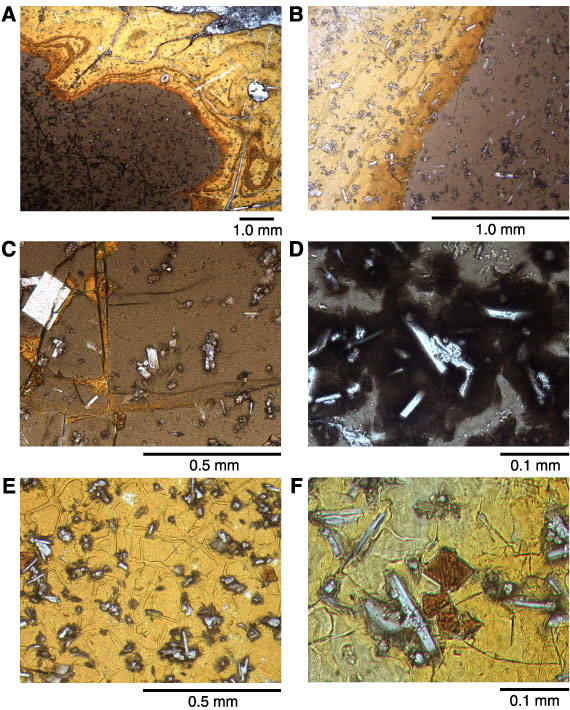
Figure F40. Features of hyaloclastite at the flow top of the upper massive flow (Sample 200-1224E-3R-1, 6-10 cm; all in plane-polarized light). Note the quasilayered aspect to the palagonite where it rims the glass. A. A palagonitic rim (yellow) embayed along cracks into fresh basalt glass (brown). B. Detail of palagonite rim (left) next to fresh glass. Note the layered aspect of the palagonite and the sharp boundary between it (left) and the glass (right). C. Detail of fresh quenched glass at the edge of a breccia shard showing small plagioclase euhedra and tiny acicular plagioclase crystals, some of them intergrown with clinopyroxene. A fracture lined with palagonite cuts vertically from the top of the photomicrograph nearly to its base. D. Individual tabular crystals of plagioclase and plagioclase-clinopyroxene intergrowths coated with dark-brown spherulitic material near the edge of a glass shard. E. Palagonite replacing glass with acicular needles of plagioclase and stellate plagioclase-clinopyroxene intergrowths. Most crystals are coated with a thin rim of brown spherulitic material. Note the fracture pattern in the altered glass. F. Detail of a palagonitized glass shard showing crystal intergrowths and an altered skeletal olivine replaced by orange secondary minerals.



![]()